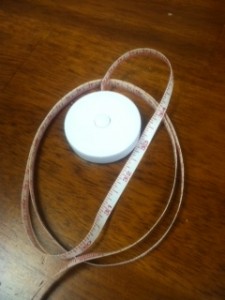
Body Mass Index or BMI is a part of our regular assessments when you come in to see me, the doctor, or participate in STRIVE 2 Survive. It’s part of our assessments as it’s a fairly reliable indicator for fatness in most adults and it tells us where you’re at on the spectrum in regards to your height to weight ratio. BMI is calculated from your height and weight and is an inexpensive measurement tool compared to other measurements for body fat such as underwater weighing or the bod pod. BMI does not not take muscle mass or bone structure into consideration thus it’s not always the best measurement for everyone. It is not as beneficial with athletes and the elderly.
There are several categories which help us determine where you are at at the spectrum of underweight to obese. The categories include:
- Underweight: BMI below 18.5
- Normal weight: 18.5 to 24.9
- Overweight: 25.0 to 29.9
- Obese: 30.0 and above.
Those people with very low or very high BMI’s are at highest risk. Even though BMI is used as an assessment tool, it’s just one factor that contributes to the big picture of your overall health and wellbeing. As I said earlier, we use BMI in STRIVE 2 Survive, but we also get body fat percentage, fat mass, and muscle mass by using our body composition analyzer scale. Other measurements we find valuable are blood pressure, waist circumference, and lab work such as the lipid panel and glucose. A higher waist circumference can be an indicator of heart disease as those who carry their weight in their mid section (apple shape) are at higher risk for heart disease compared to those who carry their weight in their buttocks and thighs (pear shape).
If you would like to calculate your BMI and learn more about this measurement, check out this website for more information: http://www.nhlbisupport.com/bmi/.
If your BMI is not desirable and you’d like to work on improving this, eating healthy, practicing portion control, and engaging in daily activity are tools for success. With STRIVE 2 Survive we like to look at the big picture of wellness which is why we get the variety of measurements pre-program and post-program. Sometimes we get frustrated with the scale as the number doesn’t always want to move like we want it to, but we have to remember that our positive lifestyle changes can be improving things inside too!
-Kelsey

